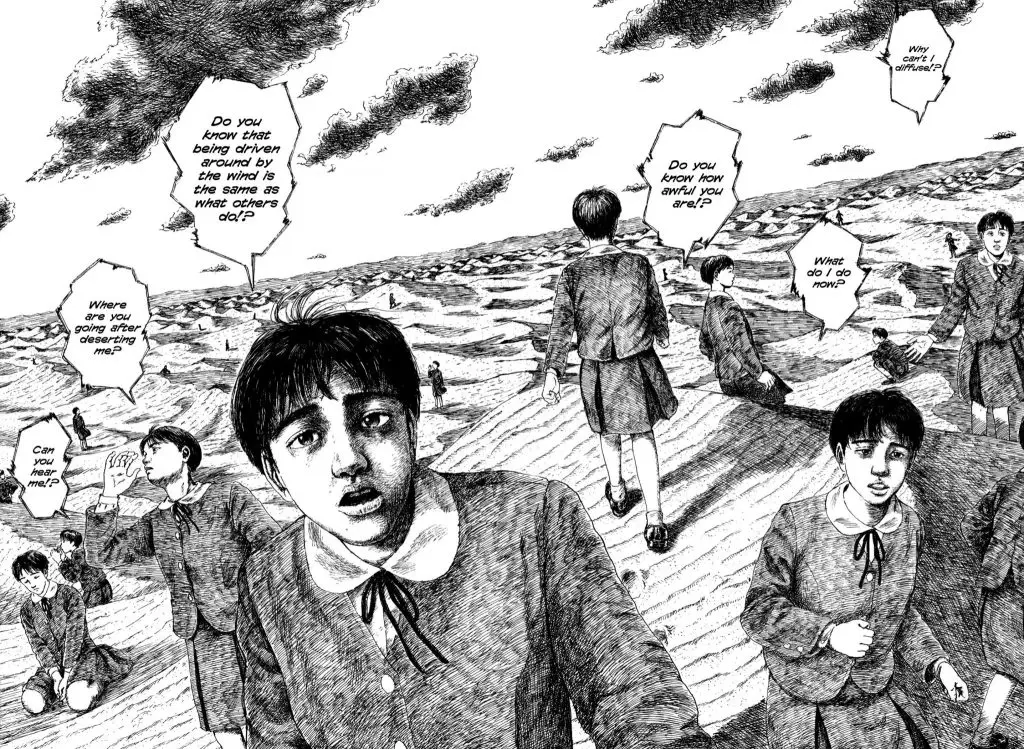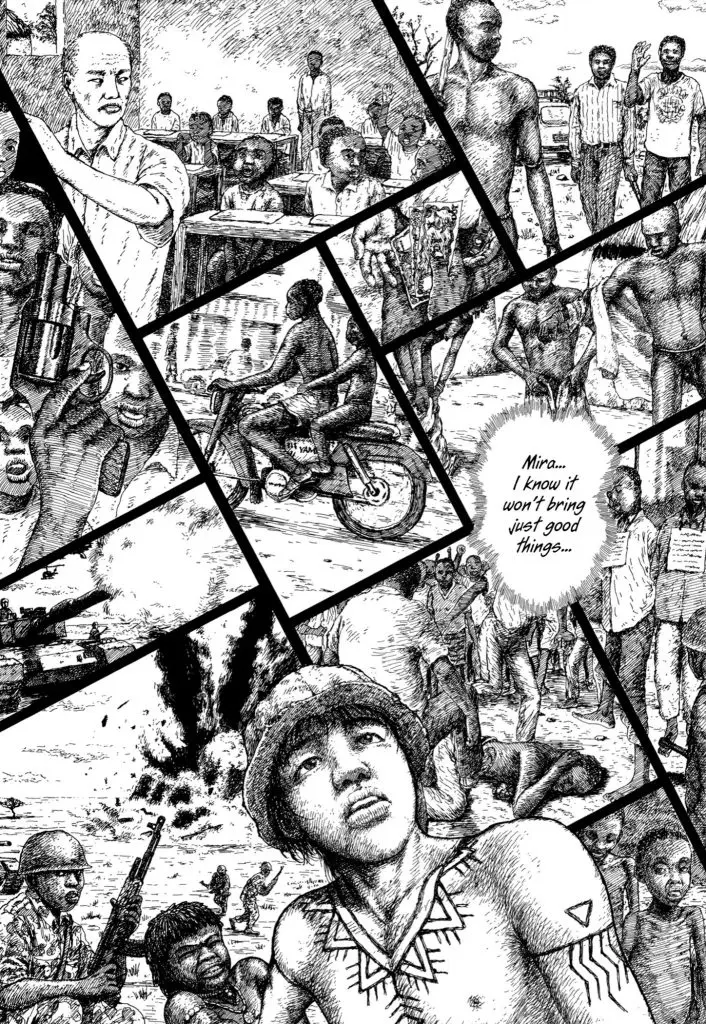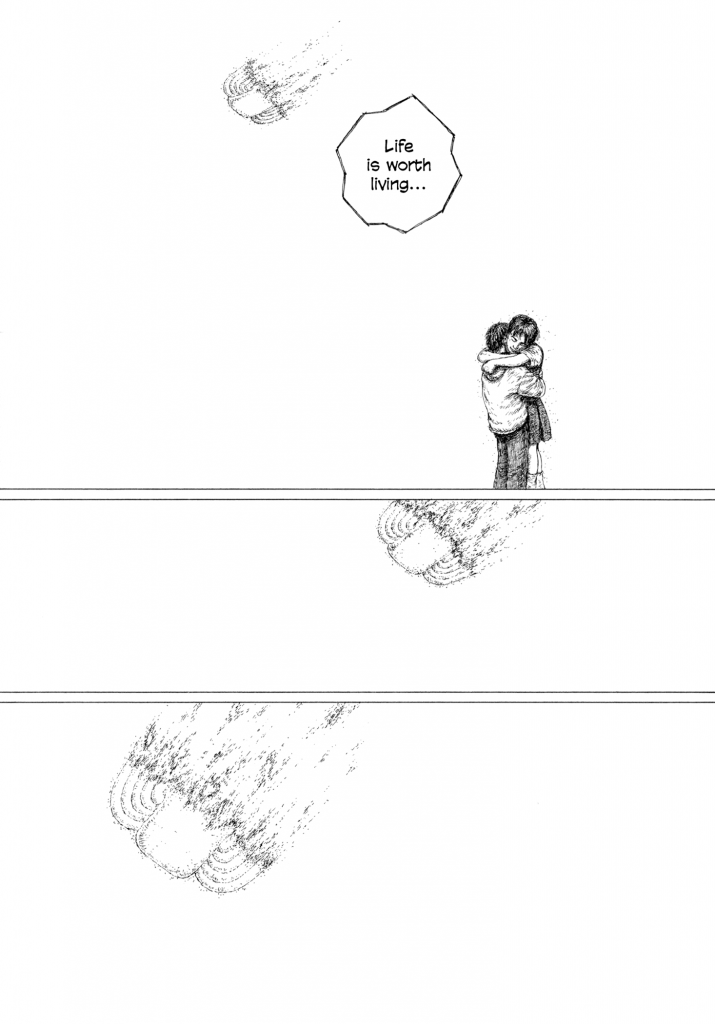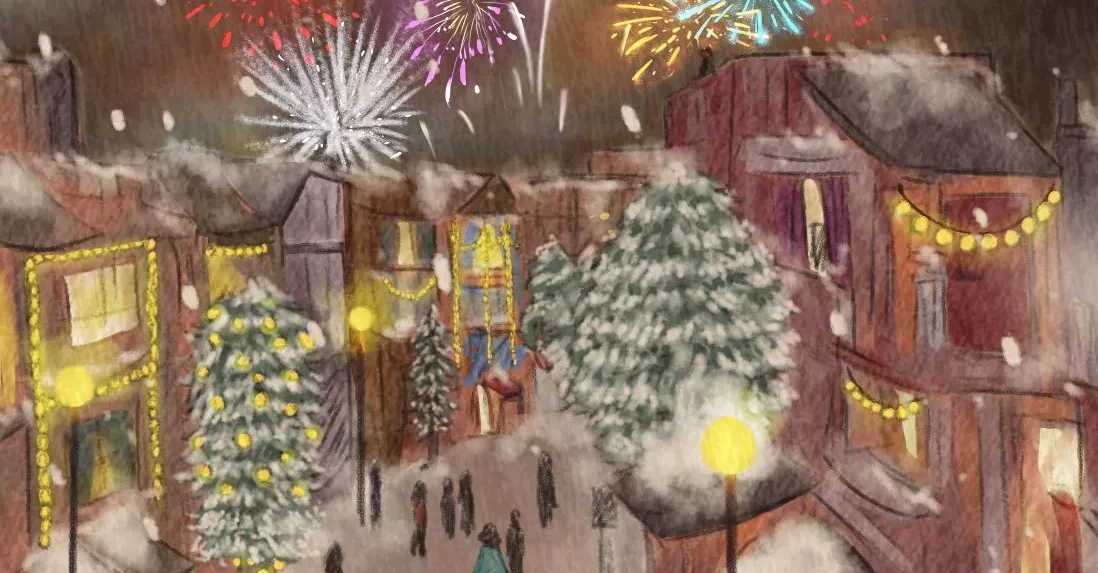“A Diffusion Disease” by Hideji Oda: An Essay

A Diffusion Disease is a manga that seeks the plague of lost hope as a coping mechanism or a source for escapism. Here, the main character describes his inner fears as a supernatural phenomenon of disappearing into thin air like the sands of time. A surreal reference to Sandman by Neil Gaiman or a pleasant showcase of death related to vanishing away from our miseries. The thing it showcases often can be seen in how the main character portrays his relationship with the three main female companions in his life.

Hideji Oda, in A Diffusion Disease, shows signs of the liberation of his artistic mind with fear, backlash, thoughts of depression, ideas of self-harm, and nihilism put into the medium of existentialism. He takes inspiration from Oshimi Shuuzou’s art style and themes. We also see the portrait of his fictional mindset on gripping sorrows as he puts himself to the test with much to cover in just the seven chapters he had in mind.
The two volumes cover nine chapters, with each volume having four to five chapters and two extra chapters. A Diffusion Disease settles down with Hideji Oda taking turns with the three main characters’ lives and interactions.
The first arc portrays a childhood friend who loved the protagonist, leading to separation and forgetting the dead for a memorandum-filled episode. Then we see him exploring the sides of this so-called disease of disappearing into thin air.
A Diffusion Disease doesn’t try to hide its fictional aesthetic by not keeping many of the secrets as truly secrets. Instead, he points out those things being fictional but having an effect that the readers could imagine themselves going through.
We see our main protagonist struggling to ask why is it him, why does he keep turning into sand particles? How is he never in one place, or does he deserve to be loved in this world?
So many questions to which there are no answers.

In the next part, we see the exploration of leaving behind love as a forsaken curse for the protagonist, who realises what it means to care for another human being; to writhe in agony. He realises that his adamancy to protect someone he saw getting assaulted turned him into a bigger monster. By letting his fear sneak up on him, He asks himself how he ended up here. Is it lust he is after, or is it the loneliness and jealousy in his heart?
The use of sexual temptation and loss of love in a ripple effect is similar to how it is often used in Inio Asano’s works, like Goodnight Punpun, A Girl on Shore and Nijigahara Holograph. But the author here also uses Flowers of Evil-like atmosphere to recreate the frustration building over for the protagonist as he needs to get separated from another chapter of his life. One in which he embraced her warmth and made her feel comfortable but lost himself in the process to understand why he keeps on “Diffusing.”
In simple terms, the diffusion process is when someone dissolves into the air, going from one physical state to another.
The protagonist travels to another continent, even through time and space. Meeting a female Sabana, an African native woman to whom he opens up his heart after saving her. The author prominently makes the conversation as personable as possible.
It is admirable how he talks to her, but his insecurity of being unable to accept himself lets his existence fade away till another bus arrives.
Afterwards, he learns to be compassionate and starts to understand how his curse can be a gift too. With each chapter in his life, he explores a new side of himself, which helps him find more clues pertaining to why he is in this state. He ends up accepting his fate and finally diffuses. However, this time, it is to help someone.
He stumbles upon the city of Tokyo after several years. His fate was calling him to the city. Later on, he meets his greatest nemesis and his friend, who is on a polarised spectrum of good and evil, but eventually sees eye to eye in treating him like a soul to experiment.
The protagonist after faced phases of lost childhood and disillusionment. However, he leaves all that behind for self-sacrifice. He opens his heart to someone and jumps right in to understand what love is. He finds himself in a position where he has to determine whether this is love, life, or simply nothing but further sorrows.

He is in his final grave, a chapter where the climax begins. Here, the author displays the true masterpiece he stored for his readers in the form of psychological dementia. He makes us think this is nothing but a catastrophic apocalypse and the mysterious beginning of Junji Ito like creatures. But goes back into Naoki Urasawa’s levels of creating a monster in human form. The protagonist is on the verge of meeting an angel, but he ends up meeting Lucifer. A fallen angel, he is relinquished by Hatred, guilt, jealousy, and revenge.
The saga ends on a sweet note: everyone has their own choices. There is nothing called tomorrow to be given up over something pivotal. You have your own decisions to make in life, to accept existence and to understand the necessity of being loved. With great sorrow, the monster in one’s heart disappears, and an angel falls off from the heavens but seeks life for another. A life for a life and a tear for a tear.
Our protagonist says one last goodbye. As to whether he is alive or dead, nobody knows.
A Diffusion Disease truly described the art of existentialism with gruesome and subtle nudity. It adopts parapsychological concepts which are beyond messed up. While synonymously adding the author’s own philosophy and a good message to every lost soul out there.
Personally, I love it when mangas are self-aware enough to be empathetic while having a depressing tone. At the same time, having a final message that cheers on the beautiful message about life. “Time must go by; sands will fly, oceans will be waved from one place to another in tides, while you out there will begin to live for another day sometimes.”
That being said, what a beautiful multidimensional manga it was!
I wish I could talk more, but it would be just me rambling on and on.
Do give this a try if you want something to think about. Of course, it is age-restricted, and I would suggest keeping that in mind when you read. Try to read it with a fresh mindset and have a sip of coffee or tea, if you will.







Great analysis! Loved the references you used within the article. Really intrigued to read the manga now!
Your Welcome, this was my first time writing for any magazine. I Hope you read the short manga and will love it <3